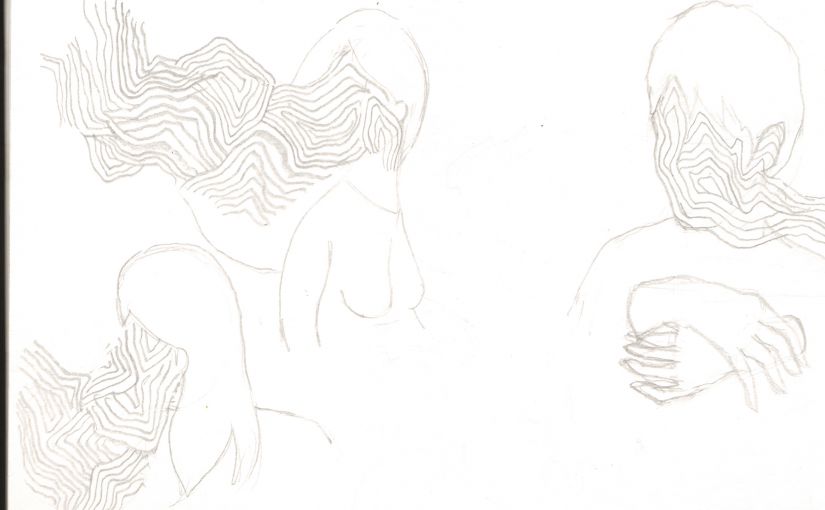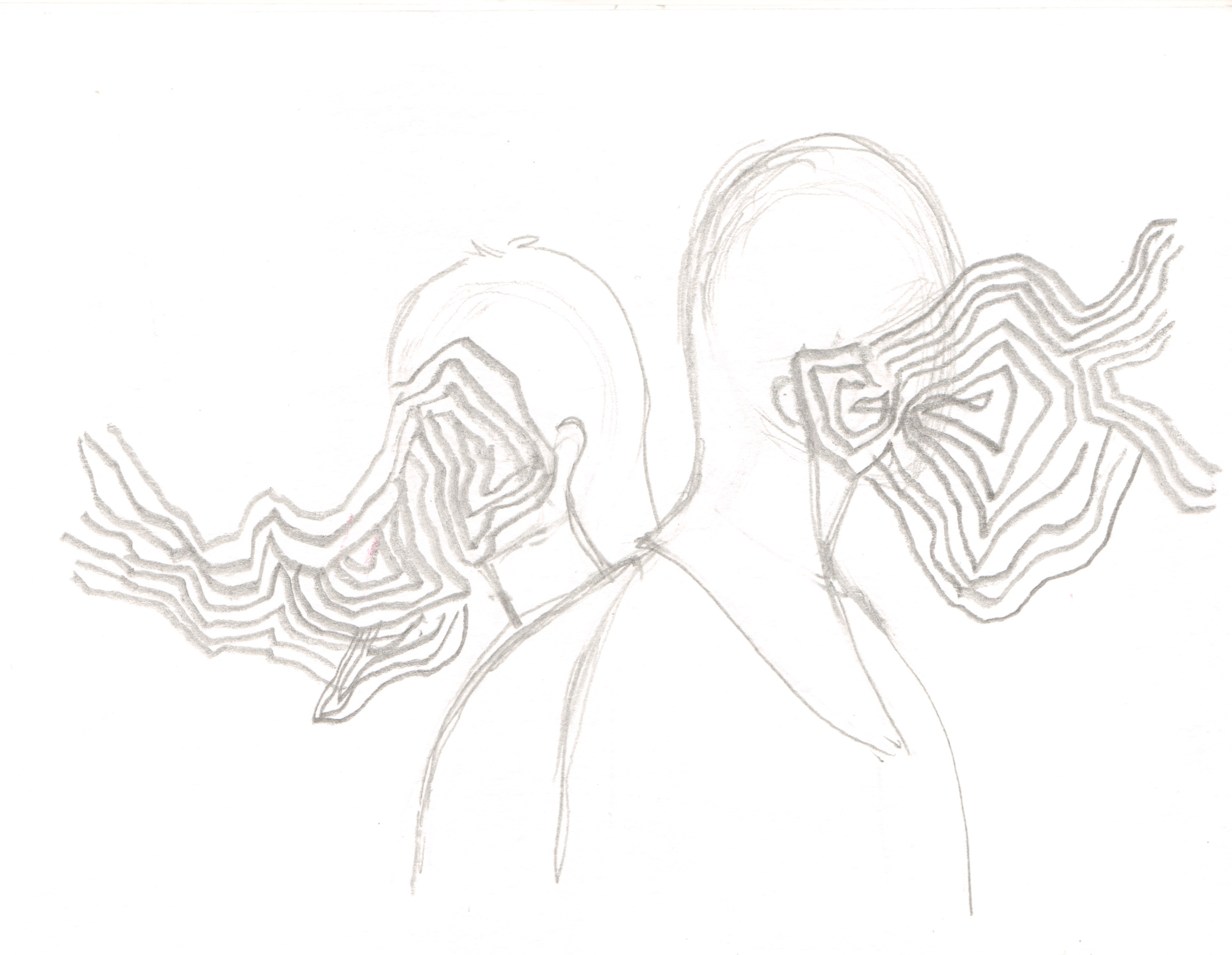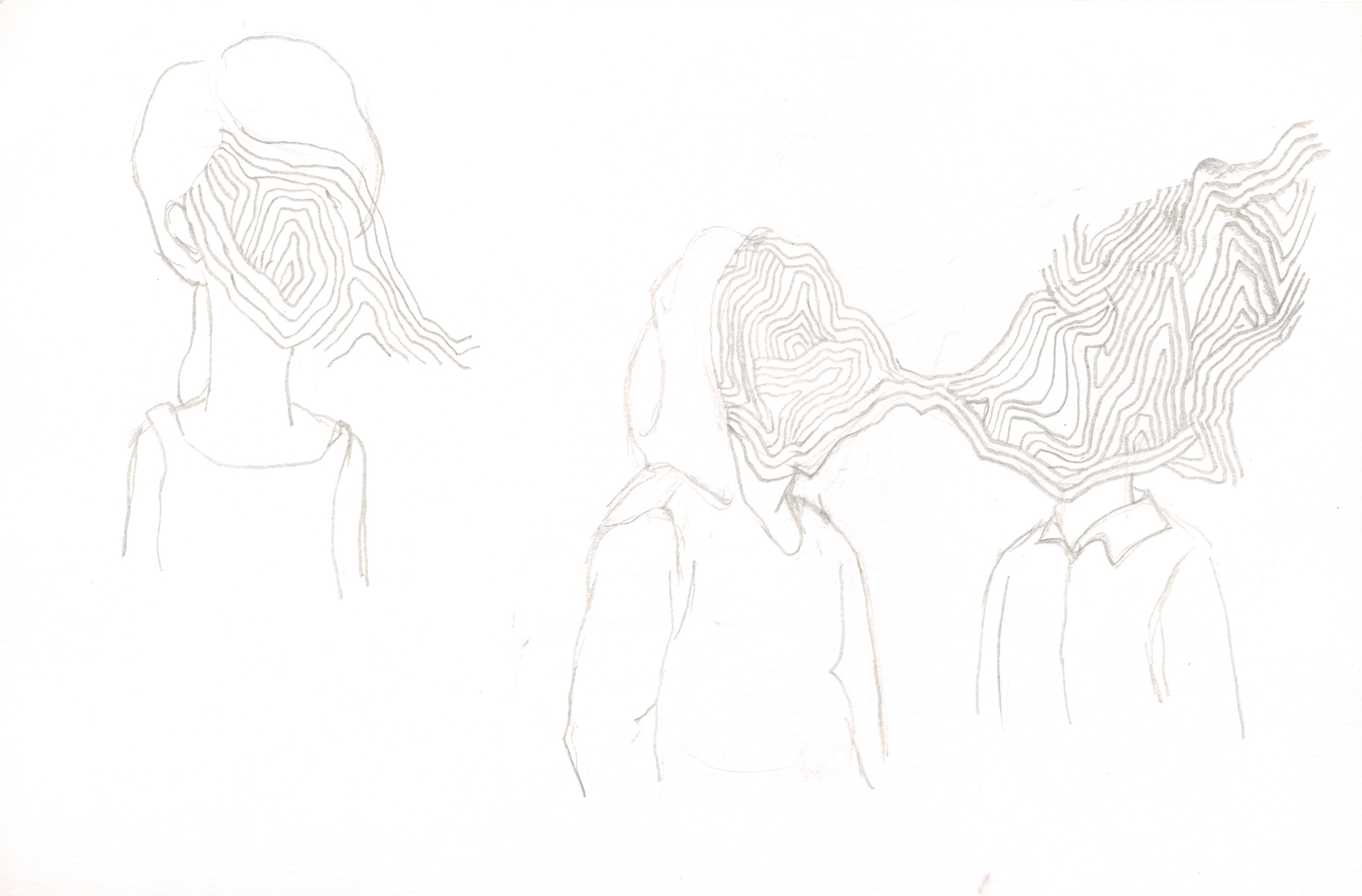Sketched more about the interaction between people. Trying out to bring out the emotion and feeling through the posture of people. Also, playing the distortion line around with hand gesture. The reflection and comment are that those realistic hands have lost the feeling of dreamscape. So, I focus on the stylised hand gestures.
Category: Pattern Art Design & Arch.
Pattern | W3 – Sketch 1






Experiment with distortion filter/effect in photoshop
The comment: the line is too smooth and mechanic. Hand drawn line is more organic and control




Pattern | Topic of Daydreams Determine Memory Loss
Have you ever found yourself daydreaming and had difficulty remembering what you were doing before the temporary escape?
If the answer is yes, then you are normal. Now, new research finds that the memory loss is more pronounced if your mind drifts farther — to memories of an overseas vacation instead of a domestic trip, for example, or a memory in the more distant past.
Psychologists have known for a while that context is important to remembering. If you leave the place where a memory was made — its context — it will be harder for you to recall the memory.
Previous studies had also found that thinking about something else — daydreaming or mind-wandering — blocks access to memories of the recent past.
In the new study, psychological scientists wanted to know if the content of your daydreams affects your ability to access a recently acquired memory.
For one experiment, each participant looked at a list of words as they appeared on a computer screen, one at a time. Then they were told to think either about home — either where they’d been that morning or about their parents’ house — where they hadn’t been in several weeks.
Next, the participant was shown a second list of words. At the end of the test, they had to recall as many of the words from the two lists as possible.
Participants who had thought about the place they’d been only a few hours before remembered more of the words from the first list than did participants who had thought back several weeks.
The same was true for memories about place, tested in a second experiment. Those who thought about a vacation within the U.S. remembered more words than those who thought about a vacation abroad.
The study is published in Psychological Science, a journal of the Association for Psychological Science.
One practical application of the research might be for people who want to forget about something.
“If there’s something you don’t feel like thinking about, you’re better off remembering a more distant event than a close event, to try to put it out of your mind for a while,” says Peter F. Delaney of the University of North Carolina at Greensboro.
“It can help you feel like you’re in a different situation.”
Source: Association for Psychological Science
Retrieved from: http://psychcentral.com/news/2010/07/27/topic-of-daydreams-determine-memory-loss/16056.html
Pattern | Proposal and Concepts
Concept 01
Comfort Food
This idea is derived from my initial purpose to create patterns showing a series of pleasant daydream which bring happiness, joyful and having healing psychologically. Inspired by researching the memories or items that make us psychologically and physically happy, I came to the topic of comfort food. The idea is to create a pattern according to the comfort food effect so that to relieve emotional stress.
How to do that with pattern? Not only showing those comfort food but also integrate with related physical activities or memories to enhance and bring out the feeling of happiness. As by eating those foods that remind us of those times, we symbolically consume that past happiness.
References
Children and hand drawn style illustration to demonstrate the impact of comforting.





Concept 02
Back to simple life
Undoubtedly, daydream is strongly related to imagination and creativity. Creativity and imagination are being nurtured since we are kids. Looking back, what you do when you were a kid? We stared at wall and wandering. When we bored, we played things around us with imagination. We entertain ourselves with those playful imaginations. But nowadays, we stared at our tech devices, like Ipad etc. We rely on those devices to entertain us. We love it, of course, but don’t mean it is good for us.
So my idea is to create a pattern that makes us recall our imaginative minds and thoughts when we were kids.
How will my pattern do that? Turn boring life into interesting life without relying on any tools but your imagination.
References – children vintage illustration
which could evoke our imagination and creativity through the colour or basic shapes








Techniques (watercolour and crayon texture)



Concept 03
Memory Loss – distortion (Chosen)
The idea is inspired by the article “Topic of Daydreams Determine Memory Loss” and the experiments that engaged by psychological experts. It is surprising that the content of our daydreams actually affected our memory. As we normally thought that we tend to forget the memory in the more distant past compared to recent memory. This is even clearly been shown in our memory deterioration when we grow older. So I came out with the idea of expressing the distortion of space and time in memory which causes misleading and confusing.
How will the patterns do that? Express the feeling of confusing, disturbing, and quirky by creating depth, an illusion.
References

http://www.greigedesign.com/blogs/blog/18689479-rebecca-atwood-new-textiles


Anca Gray – surface texture created by realistic object






Technique

Pattern | Why Comfort Food Comforts
by CARI ROMM
The Oxford English Dictionary, though, was wrong. (“I don’t really believe I created the term,” the author of the Post article wrote in 2013, but “since [1977]—if not before then—it has been one of my favorite food descriptors.”) The phrase “comfort food” has been around at least as early as 1966, when the Palm Beach Post used it in a story on obesity: “Adults, when under severe emotional stress, turn to what could be called ‘comfort food’—food associated with the security of childhood, like mother’s poached egg or famous chicken soup,” it reads, beneath the headline “Sad Child May Overeat.”
Regardless of when people found the words to describe it, though, the concept itself is ageless. Sad child may overeat. Or, put another way, certain foods promise solace as much as they do fuel. But what’s murkier is whether comfort food can actually deliver on that promise. Is that the feeling of a soul being soothed, or just the onset of a mac-and-cheese-induced food coma?
Retrieved from http://www.theatlantic.com/health/archive/2015/04/why-comfort-food-comforts/389613/
Resources: http://science.howstuffworks.com/life/food-happiness2.htm









